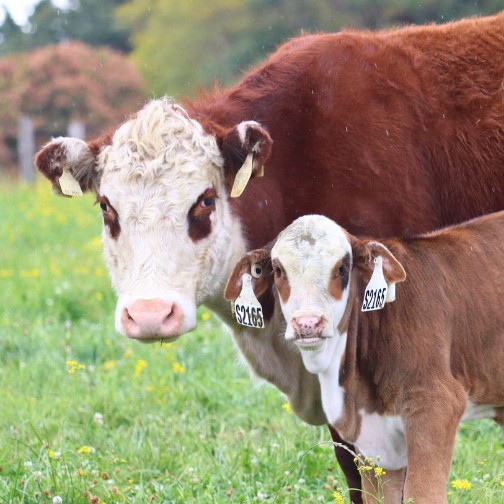Upcoming calving boom to mark major project milestone
 The first-generation of heifers bred by the Southern Multi Breed project are just days away from calving, with 521 expected to calve beginning in mid-July.
The first-generation of heifers bred by the Southern Multi Breed project are just days away from calving, with 521 expected to calve beginning in mid-July.
“This is a significant milestone in the project as it will allow researchers to measure the first re-breed interval or the lactational anoestrus interval in temperate breeds for the first time,” DPI project leader Kath Donoghue said.
“Achieving high conception rates in first-calvers is often challenging, as these females are lactating and still growing while trying to conceive for the second time.”
Dr Donoghue said ovarian scans will be conducted on a monthly basis in order to identify when these females commence cycling after calving.
“The first re-breed or lactation anoestrus is then able to be calculated, allowing the identification of females who recommence cycling earlier post-calving,” Dr Donoghue said.
“Relationships between lactation anoestrus and fertility traits, such as days to calving and heifer puberty, will be investigated, along with relationships with production traits, such as growth, feed efficiency and carcass traits.”
Data gathered from both cows and calves during the project will assist with the long-term goal of collating a valuable data resource that includes hard-to-measure traits of economic importance on the Angus, Hereford, Shorthorn, Wagyu, Charolais, and Brahman breeds.
New traits will also be recorded throughout the life of the project to provide foundation data for development and potential inclusion in BREEDPLAN of new EBVs (Estimated Breeding Values) for a wider range of traits that impact commercial profitability.
“As a result of this intensive, precise recording of new, existing, and hard-to-measure traits, seedstock and commercial bull buyers will have access to EBVs with more accuracy for describing the genetic merit of individual animals,” Dr Donoghue said.
“The development a multi-breed evaluation from this foundation data means commercial producers looking to buy bulls will ultimately be able to select the right bull for their operation, irrespective of whether an animal is Angus, Hereford, Shorthorn, Wagyu, Charolais or Brahman.”
The $7.3 million-dollar project is co-funded by NSW DPI, UNE, MLA and the Commonwealth Government through the MLA Donor Company (MDC).